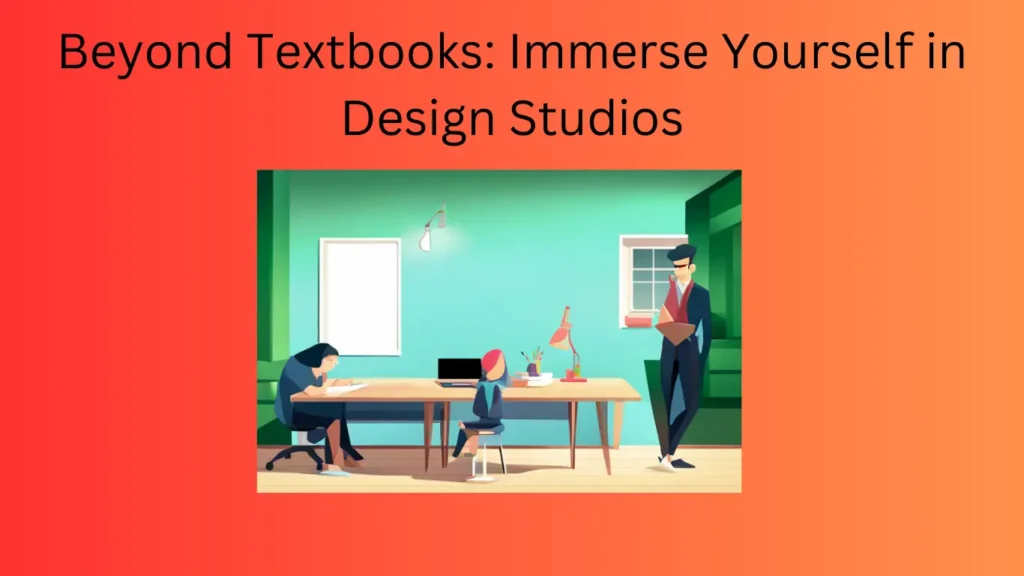In the ever-evolving landscape of education, the traditional classroom setup is gradually giving way to more dynamic and hands-on approaches. One such approach that has been gaining traction is the incorporation of design studios into educational frameworks. These studios go beyond the confines of textbooks, providing students with a space to unleash their creativity, collaborate with peers, and engage in real-world problem-solving.
The Evolution of Education
Traditional education has long been centered around textbooks and lectures, with students absorbing information through passive learning. However, the world is changing rapidly, and the skills required for success in the 21st century demand a more interactive and practical approach. Design studios offer a departure from the conventional, encouraging students to apply theoretical knowledge to practical situations.
Breaking the Mould
Design studios are not limited to disciplines like graphic design or architecture; they have found a place in various academic realms, including engineering, business, and even healthcare. These studios provide an environment where students can break away from the constraints of textbooks and explore innovative solutions to complex problems.
Fostering Creativity and Innovation
One of the key advantages of design studios is their ability to foster creativity and innovation. By engaging in hands-on projects, students learn to think critically, approach challenges with an open mind, and develop a deep understanding of the design process. These skills are transferable to a wide range of fields, preparing students for the demands of a rapidly changing job market.
Collaboration and Teamwork
Design studios emphasize collaboration and teamwork, mirroring the real-world work environment. Students work together on projects, bringing diverse perspectives to the table. This collaborative aspect not only enhances the learning experience but also prepares students for the interdisciplinary nature of many modern professions.
Bridging the Gap Between Theory and Practice
While textbooks provide a theoretical foundation, design studios bridge the gap between theory and practice. Students apply what they learn in the classroom to real-world scenarios, gaining a deeper understanding of how concepts manifest in practical situations. This application-oriented learning is invaluable in preparing students for the challenges they will face in their careers.
Embracing Technology
Design studios often leverage cutting-edge technology to enhance the learning experience. From 3D printing and virtual reality to collaborative online platforms, students are exposed to tools that mirror industry standards. This not only makes the learning experience more engaging but also ensures that graduates enter the workforce with relevant skills.
The Future of Education
As we look to the future, the integration of design studios into educational curricula is likely to become more widespread. The demand for creative thinkers and problem solvers is on the rise, and design studios provide a fertile ground for nurturing these skills.
In conclusion, the shift from textbooks to design studios represents a positive evolution in education. By embracing a more hands-on, collaborative, and technology-driven approach, students are better equipped to navigate the challenges of the modern world. Design studios not only prepare individuals for successful careers but also cultivate a mindset of lifelong learning and adaptability, essential qualities in an era of constant change. So, let go of the traditional constraints and immerse yourself in the dynamic world of design studios for a truly transformative educational experience
For further Inquires Contact Us
FAQs
Q1: What is the primary difference between traditional education and design studio learning?
- A1: Traditional education relies on textbooks and lectures, while design studios emphasize hands-on, collaborative, and practical learning experiences.
Q2: Can design studios benefit students in non-design fields?
- A2: Absolutely! Design studios are versatile and have proven valuable in various disciplines, fostering creativity, critical thinking, and teamwork.
Q3: How do design studios prepare students for the real world?
- A3: Design studios bridge the gap between theory and practice, allowing students to apply their knowledge to real-world scenarios and challenges they may encounter in their future careers.
Q4: Are design studios technology-oriented?
- A4: Yes, many design studios leverage cutting-edge technology, including 3D printing and virtual reality, to provide students with a glimpse into industry standards and enhance their learning experience.
Q5: What skills do students gain from participating in design studios?
- A5: Students develop crucial skills such as creativity, innovation, critical thinking, collaboration, and adaptability, preparing them for success in the rapidly changing job market.

